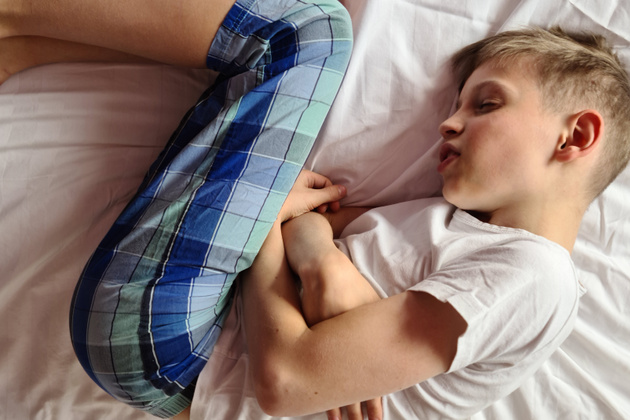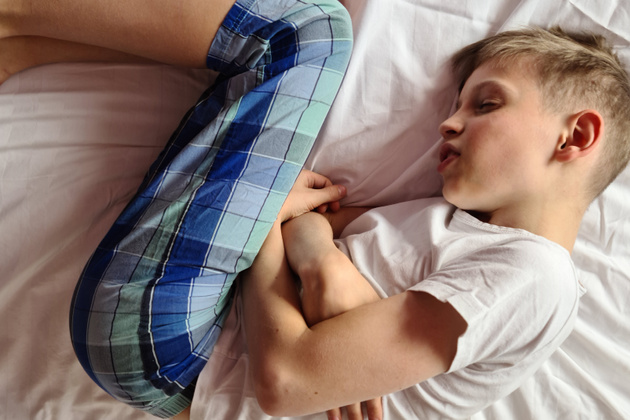Inguinal hernia in children and its treatment

Inguinal hernia is one of the most common congenital problems in babies and children. The testicles of male babies, which are inside their own abdomen while they are in the womb, move down from the baby’s abdomen through the inguinal canal and settle in the egg sacs as the pregnancy progresses. This sac (processus vaginalis), which originates from the peritoneum (abdominal membrane) inside the inguinal canal, closes spontaneously with birth. However, if it is not closed, the situation we call inguinal hernia (indirect hernia) occurs due to the internal organs entering this canal and the pressure it will create.
Having a history of inguinal hernia in twins and other family members is an important factor that increases the risk of inguinal hernia. According to the figures, the probability of occurrence in family members of patients with inguinal hernia is 11.5%. Exposure of the open sac to conditions that increase intra-abdominal pressure such as constipation, fever, cough and vomiting is also a trigger for inguinal hernia. We convey this issue, which is extremely important for babies and their families, with expert knowledge. Details, Anadolu Health Center Pediatric Surgery Specialist Dr. Ahmet Nadir Tosyalı explained…
WHAT ARE THE FIRST FINDINGS?
Families usually make the preliminary diagnosis of inguinal hernia, which causes symptoms such as swelling in the groin or yolk sac, restlessness, and in some cases vomiting. Children are occasionally brought to the clinic with complaints of swelling in the right or left groin area (Inguinal hernia can be seen on the right in 60% of cases, on the left in 30%, and bilaterally in 10%). This swelling occurs when intra-abdominal pressure increases, such as straining, crying and coughing, and usually disappears with rest. In advanced cases, the swelling fills the scrotum (bag), while older children may also experience pain in the groin, especially during increased physical activity and exercise. In newborn babies, symptoms such as reluctance and restlessness in breastfeeding are observed.
IN WHICH AGE RANGE IS IT MORE COMMON?
Indirect inguinal hernia, which occurs mostly in children when intra-abdominal organs enter the peritoneal sac, is a condition seen in 1-5% of children. This rate rises to 30% in premature babies. Although it is more common in babies in the first months after birth, the majority of them are under 1 year of age. In adults, it occurs mostly after the age of 50. It is generally accepted that approximately 28-30% of men and 2-3% of women have an inguinal hernia at some point in their lives.
WHAT IS DONE DURING THE DIAGNOSIS?
A definitive diagnosis can be easily made by taking a good history, a careful and patient general physical examination including the genital area, and, if necessary, ultrasonographic examination. We should also note that 30-60% of cases are diagnosed in the first six months.
SURGERY IS THE ONLY OPTION FOR TREATMENT
Inguinal hernias are treated only surgically, and this repair is the most frequently performed surgical intervention in pediatric surgery clinics. Surgeries are performed using classical open or laparoscopic methods. In the open method, repair is performed using the hernia sac knotting technique from above, after a small horizontal incision made in the groin area. In the laparoscopic method, the surgery is performed with a tool and camera inserted through holes created through a single or 2-3 small incisions on the anterior abdominal wall. There is no need for hospitalization for the patient. Babies who undergo surgery in the morning are discharged in the evening. While babies between 0-12 months return to normal within 3-4 hours after surgery, this period is only 1-2 days for children in older age groups. It is important not to lift heavy loads for a certain period of time (6-8 weeks) after the surgery, to consume plenty of fiber to avoid constipation, and to avoid excessive exertion.
Does an inguinal hernia go away on its own?
No, it won’t pass. In addition, it is not known when and where the risks and dangers that may occur will occur. Therefore, when inguinal hernias are diagnosed, they must be treated.
Does inguinal hernia recur?
There is always the possibility of the hernia recurring after surgery. However, the postoperative recurrence rate in the pediatric age group is not more than 1%. It may recur due to reasons such as poor surgical technique or a structural connective tissue disorder of the patient.
What is hernia strangulation?
Incarceration (hernia strangulation); It is the failure of the organs in the hernia sac to return to the abdominal cavity easily. If the nutrition of these organs is impaired and decay occurs, this situation is called “strangulation”. Both conditions are known as risks of inguinal hernia and require immediate intervention.



